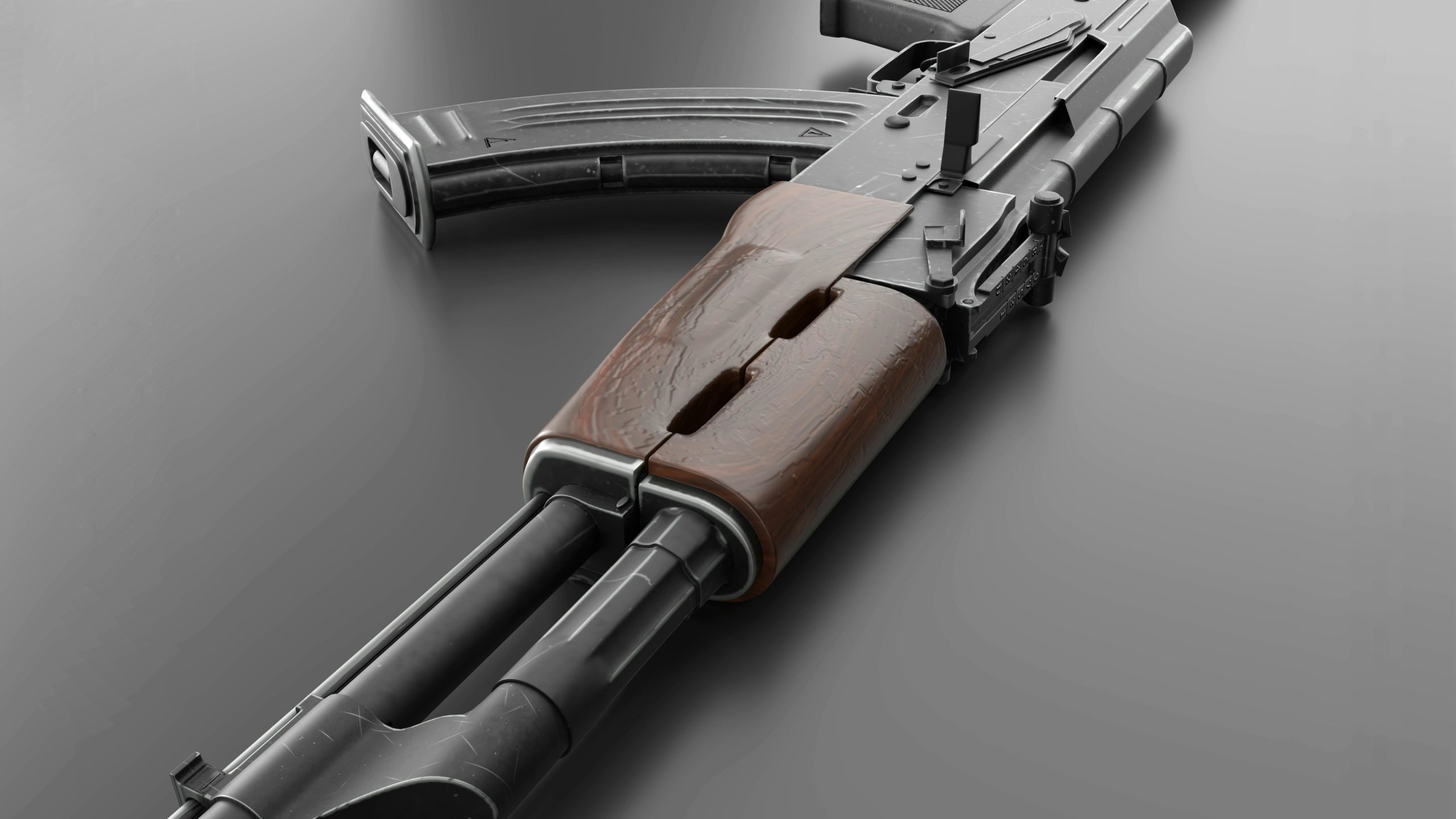AK-47: A Symbol of Power, Controversy, and Resilience An AK-47 rifle, symbolizing rebellion and resilience, stands as a potent reminder of the enduring legacy of defiance against tyranny and oppression.

In the pantheon of firearms, few names resonate as profoundly as the AK-47. This iconic assault rifle, known for its rugged reliability, simplicity, and widespread use, stands as a symbol of power, controversy, and resilience. From its humble origins in the Soviet Union to its global proliferation and enduring legacy, the AK-47 has left an indelible mark on the world stage.
History
The AK-47’s origins lie in the aftermath of World War II, a period characterized by the emergence of superpowers and the intensification of the Cold War. In response to the need for a reliable, mass-produced infantry rifle, the Soviet Union initiated a design competition in 1946. Mikhail Kalashnikov, a young sergeant and skilled firearms designer, submitted his entry, the Avtomat Kalashnikova 1947 (AK-47), which ultimately won the competition and went on to become one of the most iconic weapons in history.
Kalashnikov drew inspiration from a variety of sources, including previous rifle designs and battlefield experience. His goal was to create a weapon that was simple to manufacture, easy to maintain, and effective in combat. The result was a masterpiece of engineering: the AK-47, a weapon that combined reliability, durability, and firepower in a compact and lightweight package.
Design
The AK-47’s design is characterized by its rugged simplicity and robust construction. Unlike many Western firearms, which prioritize precision engineering and tight tolerances, the AK-47 features loose tolerances and a stamped steel receiver, allowing for rapid and inexpensive production. Its gas-operated, rotating bolt mechanism harnesses the gas generated by the fired cartridge to cycle the action, providing reliable operation in adverse conditions.
Another key feature of the AK-47 is its wooden furniture, which contributes to its durability and aesthetics. The rifle’s ergonomic design, including its curved magazine and pistol grip, enhances handling and control, making it well-suited for both trained soldiers and irregular fighters. Overall, the AK-47’s design reflects a balance between simplicity, functionality, and durability, making it one of the most versatile and widely used firearms in the world.
Impact
The AK-47’s influence on global affairs transcends its role as a mere military tool. It has shaped the geopolitical landscape, influenced economic dynamics, and left an indelible mark on cultural and social spheres worldwide. From the jungles of Southeast Asia to the deserts of the Middle East, the AK-47 has been a ubiquitous presence in conflicts large and small, serving as a symbol of resistance, rebellion, and power.
Its widespread availability and ease of use have made it the weapon of choice for a diverse array of actors, including insurgents, guerrillas, and militias, seeking to challenge established powers or assert their autonomy. This widespread adoption has not only perpetuated violence but also fueled arms races, exacerbated humanitarian crises, and undermined efforts at peacebuilding and conflict resolution.
Moreover, the AK-47’s impact extends far beyond the battlefield, shaping political discourse, economic policies, and cultural narratives. Its role in armed conflicts has prompted calls for stricter arms regulations and international disarmament initiatives. Yet, its iconic status as a symbol of defiance and liberation continues to inspire artists, activists, and revolutionaries around the world, underscoring its enduring significance in the collective imagination.
In essence, the AK-47’s impact is multifaceted and complex, reflecting the broader complexities of modern warfare, global politics, and human nature. As we grapple with the consequences of its proliferation, we are reminded of the urgent need for concerted efforts to address the root causes of violence, promote disarmament, and foster a more peaceful and just world for future generations.
Controversy
Despite its legendary status, the AK-47 is not without controversy. Critics point to its role in perpetuating violence and instability, citing its widespread use in criminal activities, terrorist attacks, and human rights abuses. Calls for stricter regulation and control of the AK-47 and its variants have led to debates over gun rights, national security, and the ethics of arms sales.
However, proponents argue that focusing solely on the weapon misses the broader socio-political and economic factors driving conflict and violence. They emphasize the need for comprehensive approaches to address root causes such as poverty, inequality, and political instability. Moreover, they highlight the AK-47’s role as a tool of self-defense and national liberation, particularly in regions where government authority is weak or corrupt.
Cultural Significance
Certainly! Here’s the revised paragraph with increased use of transition words:
The AK-47’s cultural significance extends beyond its military and political dimensions, permeating popular culture and the collective consciousness. Immortalized in film, music, and literature, the rifle has become a symbol of rebellion, resilience, and empowerment. Additionally, its distinctive silhouette and unmistakable sound evoke images of freedom fighters and revolutionaries standing up to tyranny and oppression. This cultural resonance underscores the rifle’s enduring legacy and its ability to inspire generations of activists and artists alike. Moreover, its presence in various forms of media has solidified its place as an icon of defiance and resistance, transcending geographical and cultural boundaries. In essence, the AK-47’s cultural impact is undeniable, serving as a potent reminder of the power of symbols in shaping our perceptions and beliefs.
In countries where the AK-47 has played a central role in recent history, it holds a special place in the national psyche, symbolizing struggle, sacrifice, and survival. Whether revered as a tool of liberation or reviled as a harbinger of death, the AK-47’s cultural impact is undeniable, transcending borders, languages, and ideologies.
Conclusion
The AK-47 occupies a paradoxical position in the annals of history: simultaneously revered and reviled, celebrated and condemned. As a technological marvel, it stands as a testament to human ingenuity and innovation. As a weapon of war, it embodies the brutal realities of conflict and the enduring quest for power and domination.
Ultimately, the story of the AK-47 is a reflection of the complexities of the human condition: our capacity for creation and destruction, our aspirations for peace and justice, and our propensity for violence and conflict. Whether viewed as a symbol of oppression or liberation, the AK-47 remains an enduring icon of the modern age, a reminder of the profound impact that weapons wield on the course of history and the human experience.



